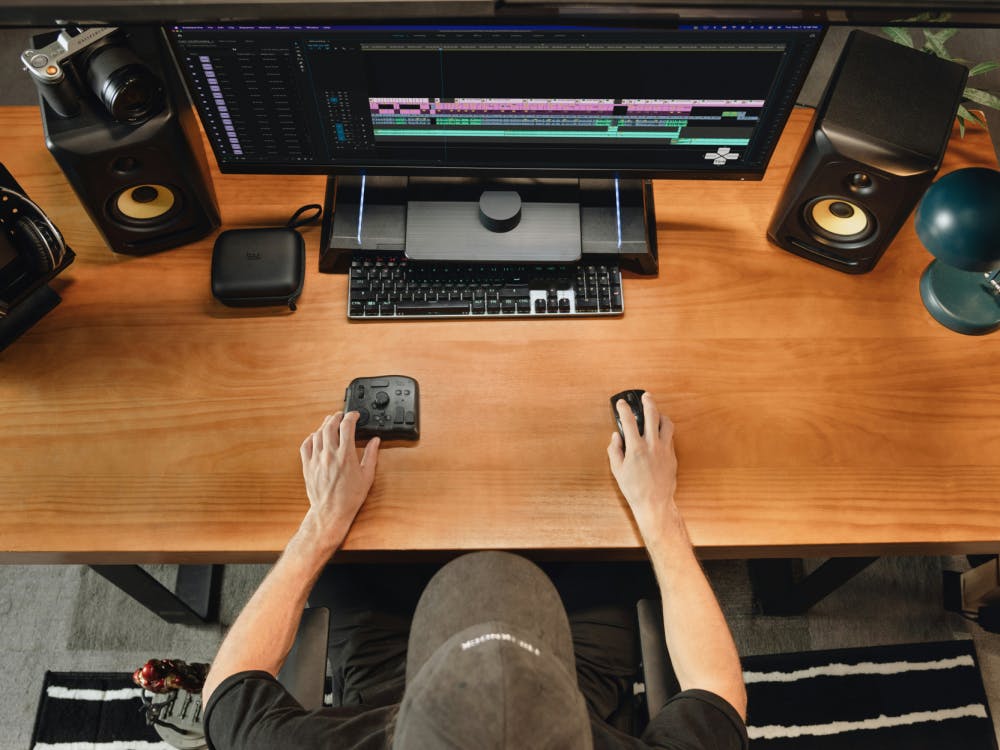TL;DR
Every day, over 112,000 tracks flood music platforms. Nearly half are touched by AI—and 1 in 4 producers now use AI tools in their workflow. If you’re not one of them, you’re probably working harder, earning less, and falling behind. Here’s why 2025 is the tipping point for music creators to embrace AI—or get left behind.
The Shocking Cost of “Old-School” Production (Time is Money)
Let’s start with something all of us feel but rarely say out loud: music production is exhausting. It’s beautiful, rewarding, inspiring—but it’s also time-consuming and expensive.
Whether you’re a bedroom producer, mix-for-hire engineer, or DIY vocalist, the hidden cost of doing everything the traditional way is massive. Not just financially, but creatively too.
Here’s the breakdown:
- Studio Time: Recording in a pro studio can cost up to $1,000 per day. Even in home studios, creators burn countless hours setting up mics, adjusting levels, comping takes. It’s time you can’t get back.
- Session Vocalists & Musicians: Hiring pros can run $200–$500 per session. Or you spend hours trying to replicate something with VSTs or layering your own vocals endlessly, hoping to get it just right.
- Mixing & Mastering: Mix engineers charge $200–$1,000 per track. Mastering can be another $100–$500 per album. Self-mixing? That could mean 8–10 hours of tweaking per track. You probably know that feeling of not being able to stop adjusting reverb tails at 2 AM.
- Podcast & Dialogue Editing: If you’re working in sound design, content creation, or film/game audio, dialogue editing can take 3–5 hours per hour of content. That’s your entire afternoon gone just cleaning up room noise or matching mic tonalities.
- The Creative Tax: Every hour you spend trimming breaths, tuning syllables, or exporting alternate bounces is an hour not spent writing new music, building your brand, or experimenting with ideas that light you up. That’s the part no one budgets for—the creative energy tax.
The harsh truth? Most creators are burning time on tasks that AI tools can now do in minutes. And those who’ve figured that out? They’re getting ahead—fast.

Meet the Divide: Early AI Adopters vs. The Holdouts
Here’s where things get interesting (and a little uncomfortable):
- 25% of producers are already using AI in their process. Not just big-name pros—bedroom producers, indie artists, YouTubers, engineers.
- 75% are not. Most say they avoid AI because they want their art to be “pure.” According to Tracklib’s 2024 study, 82% of non-users cite artistic integrity as their top concern.
- 70% believe AI will massively impact production in the near future. Even the skeptics see the writing on the wall.
Among self-releasing artists, 48% have already tried AI tools—everything from mastering and vocal cleanup to lyric generators and album art design. And the number who say they’ll “never use AI”? That’s dropped from 29% in 2023 to just 18% in 2025.
This isn’t about right vs wrong—it’s about speed and scale. Those willing to experiment with AI are automating the grind and doubling down on creativity. Everyone else is… well, still stuck EQing every breath.
The AI-Driven Productivity Leap (It’s Not Even Close)
MIT’s 2023 study showed AI users completed tasks 40% faster, with higher quality output. Adobe’s 2024 creator survey said 66% of AI-using creatives feel their content quality improved, and 58% said they could produce more overall.
Let’s apply that to our world:
| Task | Traditional Workflow | AI-Enabled Workflow |
| Vocal Comping & Tuning | 3–6 hours | AI cleanup + tuning in under 30 minutes |
| Mixing a Track | 8–10 hours or costly engineer fees | AI-assisted mix in 1–2 hours |
| Mastering | 2+ hours or $100–$500 per project | AI mastering in minutes |
| Dialogue Editing | 3–5 hours per hour of audio | <1 hour with AI cleanup & transcript workflows |
That’s days of work reduced to hours or minutes. The numbers aren’t just impressive—they’re transformative. If you can finish tracks 3x faster and release more consistently, you will reach more people. It’s not even a debate.
A Flood of Content—and AI’s Behind It
In 2023, 112,000 tracks were uploaded to streaming services every day. That number is still climbing.
Even crazier? By 2025, 18% of those tracks are AI-generated. That’s 20,000+ fully AI-made songs hitting platforms daily. That means your music isn’t just competing with other humans—it’s up against algorithms producing at scale.
If you’re taking weeks to polish a song while your AI-powered peer drops an EP, you’ll start to notice a gap. Not just in output, but in visibility, momentum, and opportunity.

Real Talk: Are You Working Harder Than You Need To?
Let’s be honest. If you’re reading this, you’re probably the kind of creator who cares. You put your heart into your mixes. You stay up late tweaking sends. You feel responsible for every detail.
But are you stuck doing too much alone?
Some of us treat manual labor like a badge of honor—but in 2025, working harder isn’t the flex it used to be. Your peers are using AI to skip the repetitive stuff and focus on what actually moves their music forward.
- That new producer on TikTok who puts out three tracks a week? AI is probably helping them prototype vocals or generate ideas.
- That engineer who suddenly took on twice the clients? They’re using AI-assisted mixing to hit deadlines without burning out.
- That podcast editor who turned around your last project in a day? Yep—AI dialogue tools.
This isn’t cheating—it’s evolving.
Not About Replacing. About Elevating.
If you’ve been afraid AI will make things less human—join the club. Many of us felt that way. But the truth is, the best results happen when creators use AI to elevate their process, not replace it.
You still decide what sounds good. You still drive the arrangement. You still bring the soul.
But now? You don’t have to:
- Manually comp 50 vocal takes
- Spend 4 hours EQing dialogue
- Wait a week for a master
- Lose momentum over plugin paralysis
AI handles the heavy lifting. You handle the magic.
Start Small. Think Big.
Here’s how you can start today:
- Pick a task you hate. Vocal cleanup? Mastering? Dialogue edits? There’s an AI tool for that.
- Try a free or trial-based option. Tools like LANDR, RX, Moises, Neutron, SoundID VoiceAI, and many others let you test the waters.
- See how it feels. If it saves you an hour—great. If it inspires a new workflow—even better.
- Talk to other creators. You’ll find that more of your peers are already experimenting with AI than you think.
Use AI where it helps. Ignore it where it doesn’t. But don’t ignore it altogether.
Final Word: You’re Not Too Late. But You Might Be Soon.
This post isn’t here to scare you. It’s here to nudge you—to remind you that your workflow, your output, and your career could be radically different 12 months from now if you let yourself try.
Because while some creators will keep polishing one track a month, others will release EPs, land sync deals, and grow their following—not because they’re more talented, but because they’re working smarter.
AI is just a tool. But in 2025, it might be the most powerful tool in your kit.
So give it a shot. Learn one tool. Automate one chore. Buy yourself back a few hours. Then go do what you do best:
Create.
Sources:
- Luminate H1 2023 Report – Track upload stats
- Deezer AI Content Report – AI % of uploads
- MIT AI Productivity Study (2023)
- Tracklib Producer AI Survey (2024)
- Adobe Creator AI Survey (2024)
- Ditto Music Independent Artist Reports (2023–2025)
- The Podcast Host – Editing time benchmarks
- Twine – Production cost benchmarks
- AES and NAMM 2024 Panels – AI and Production Trends




